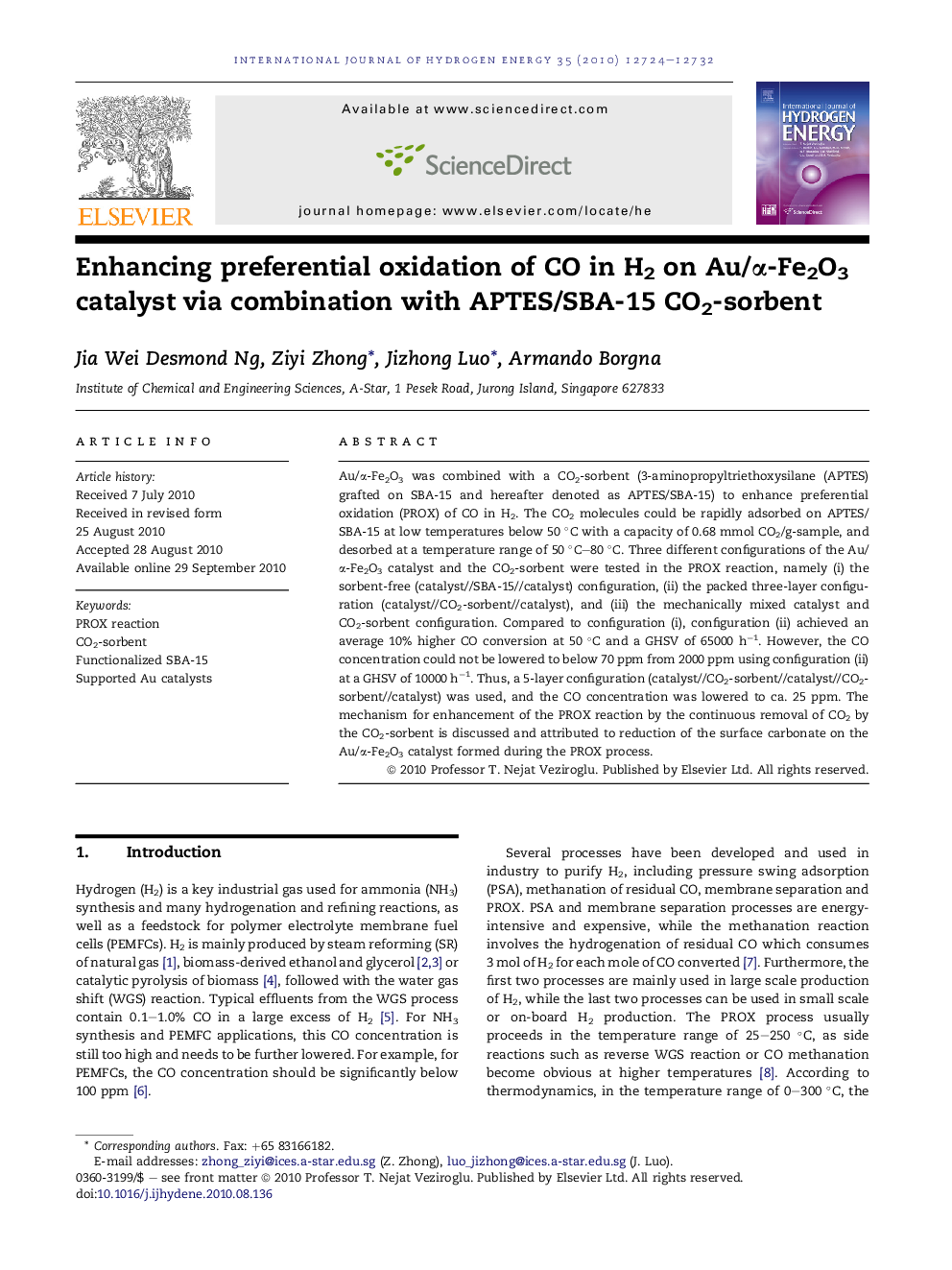| Article ID | Journal | Published Year | Pages | File Type |
|---|---|---|---|---|
| 1279913 | International Journal of Hydrogen Energy | 2010 | 9 Pages |
Au/α-Fe2O3 was combined with a CO2-sorbent (3-aminopropyltriethoxysilane (APTES) grafted on SBA-15 and hereafter denoted as APTES/SBA-15) to enhance preferential oxidation (PROX) of CO in H2. The CO2 molecules could be rapidly adsorbed on APTES/SBA-15 at low temperatures below 50 °C with a capacity of 0.68 mmol CO2/g-sample, and desorbed at a temperature range of 50 °C–80 °C. Three different configurations of the Au/α-Fe2O3 catalyst and the CO2-sorbent were tested in the PROX reaction, namely (i) the sorbent-free (catalyst//SBA-15//catalyst) configuration, (ii) the packed three-layer configuration (catalyst//CO2-sorbent//catalyst), and (iii) the mechanically mixed catalyst and CO2-sorbent configuration. Compared to configuration (i), configuration (ii) achieved an average 10% higher CO conversion at 50 °C and a GHSV of 65000 h−1. However, the CO concentration could not be lowered to below 70 ppm from 2000 ppm using configuration (ii) at a GHSV of 10000 h−1. Thus, a 5-layer configuration (catalyst//CO2-sorbent//catalyst//CO2-sorbent//catalyst) was used, and the CO concentration was lowered to ca. 25 ppm. The mechanism for enhancement of the PROX reaction by the continuous removal of CO2 by the CO2-sorbent is discussed and attributed to reduction of the surface carbonate on the Au/α-Fe2O3 catalyst formed during the PROX process.
Graphical abstractFigure optionsDownload full-size imageDownload as PowerPoint slideResearch highlights►Au/α-Fe2O3 catalyst can oxidize CO in H2 selectively (PROX reaction). ►Combination of the Au catalyst with a CO2-sorbent of APTES/SBA-15 can enhance the PROX reaction by removal of CO2 product. ►The removal of CO2 can suppress the reverse WGS reaction and reduce the formation of surface carbonate species on the catalyst during the PROX process.
